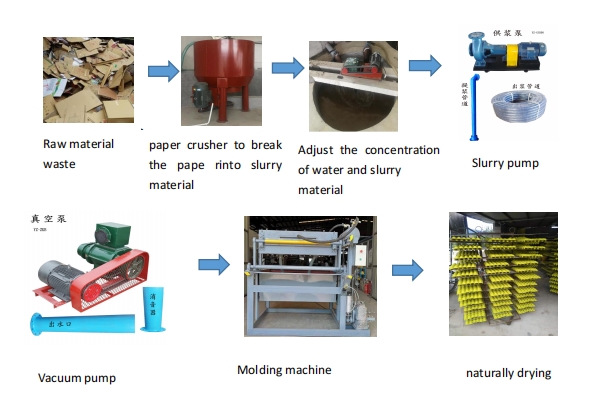Efficient Feed Pellet Production Machines for Livestock and Poultry Nutrition
Desemba . 16, 2024 05:33 Back to list
Efficient Feed Pellet Production Machines for Livestock and Poultry Nutrition
Understanding Feed Pellet Machines A Key to Efficient Animal Nutrition
In today’s competitive agricultural industry, the demand for efficient and cost-effective animal feed production is ever-increasing. One of the most significant advancements in this field is the development of feed pellet machines. These machines not only streamline the feed manufacturing process but also enhance the nutritional value of the feed, making them a versatile tool for farmers and livestock producers. This article will explore the function, benefits, and operational intricacies of feed pellet machines.
What are Feed Pellet Machines?
Feed pellet machines are specialized equipment designed to convert granular feed ingredients into compact, pellet-shaped forms. The process involves grinding raw materials, mixing them with other ingredients, and then extruding the mixture through a die to create pellets. These machines vary in size and capacity, catering to small-scale farms and large commercial operations alike.
The Pelleting Process
The pelleting process typically consists of several stages
1. Raw Material Grinding The first step involves grinding the raw materials—often grains, seeds, or by-products—into a fine powder. This ensures uniformity and improves the digestibility of the feed.
2. Mixing After grinding, the ingredients are mixed with other necessary components, such as vitamins, minerals, and binders. Proper mixing is crucial to ensure that every pellet contains a balanced nutritional profile.
3. Conditioning This step involves adding steam or moisture to the mixture before it enters the pellet mill. Conditioning enhances the binding properties of the ingredients, resulting in firmer and more durable pellets.
4. Pelleting The core of the machine comprises a die and rollers that compress the conditioned mixture to form pellets. The size of the pellets can be adjusted by changing the die, allowing customization based on the specific needs of the livestock.
5. Cooling and Drying Once pelleted, the feed is subjected to a cooling process to reduce moisture content and stabilize the structure, ensuring that the pellets remain intact during storage and handling.
feed pellet machines

6. Packaging The final step is packaging the feed pellets for distribution. Proper packaging is essential to maintain the quality and freshness of the feed.
Benefits of Using Feed Pellet Machines
There are numerous advantages to using feed pellet machines, including
1. Improved Nutritional Value Pelleting increases the digestibility of feed, allowing animals to absorb nutrients more effectively. This can lead to better growth rates, improved feed conversion, and overall healthier livestock.
2. Reduced Wastage Pellets are less likely to scatter and be wasted compared to loose feed. This efficiency not only conserves resources but also lowers feeding costs for farmers.
3. Enhanced Shelf Life The pelleting process minimizes the presence of moisture, which can lead to spoilage. Thus, feed pellets have a longer shelf life, making them a more economical option for farmers.
4. Customization With adjustable die sizes and the ability to include various ingredients, feed pellet machines allow producers to cater to the specific dietary needs of different livestock species, whether it be poultry, cattle, or aquaculture.
5. Ease of Handling and Transportation Pellets are easier to transport and handle than bulk feed. This compact form can lead to logistical savings, especially for larger operations.
Conclusion
Feed pellet machines represent a substantial step forward in animal husbandry practices. Their ability to efficiently produce high-quality, nutrient-dense feed pellets contributes significantly to improving livestock health, productivity, and profitability. As the agricultural sector continues to evolve, adopting such technologies will be crucial for meeting the growing global demand for food. Whether for a small farm or a large commercial operation, investing in a feed pellet machine is a forward-thinking choice that enhances productivity and sustainability in animal nutrition. By embracing these advancements, farmers can ensure they are at the forefront of the agricultural revolution, ready to provide optimal care and nutrition for their livestock.
-
High Performance Exhaust Fan – Efficient Ventilation Solutions for Home
NewsJun.10,2025
-
High-Quality Gestation Pen for Sows Durable Mobile Pig Pen & Simple Pig Pen Solutions
NewsJun.10,2025
-
High Quality Rabbit Cage Double Tier Designs & Welded Wire Mesh Supplier
NewsJun.10,2025
-
Floating Fish Feed Machine - High Efficiency Floating Fish Feed Extruder for Small Scale Production
NewsJun.10,2025
-
Premium Poultry Housing Solutions Mobile & Commercial Free Range Options
NewsJun.10,2025
-
Industrial FRP Fans Corrosion-Resistant Blades & Centrifugal Systems
NewsJun.09,2025






